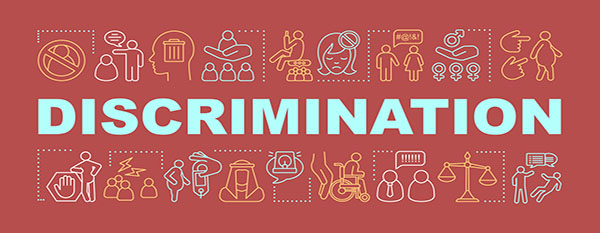What is intersectionality?
In order to explore intersectional discrimination, it is important to first understand what intersectionality means, a term originated by Kimberl Crenshaw. The Merriam-Webster Dictionary defines it as “the complex, cumulative way in which the effects of multiple forms of discrimination (such as racism, sexism, and classism) combine, overlap, or intersect especially in the experiences of marginalized individuals or groups.” For example, intersectionality may consider how a person’s race overlaps with their gender identity and how these two characteristics impact how they experience discrimination. An article from The Conversation provides a short list of characteristics that may intersect with one another.
What does intersectional discrimination look like?
According to the Council of Europe, a leading human rights organization, “intersectional discrimination happens when two or multiple grounds operate simultaneously and interact in an inseparable manner, producing distinct and specific forms of discrimination.” This can be summarized by the idea that Black women faced sexism in the Civil Rights movement and dealt with racism in the feminist movement due to intersectional discrimination. It is also shown by comparing the way an African American individual versus an African American individual with a disability experiences discrimination in the workplace. The 2018 Annual Disability Statistics Compendium found that “while 28.6 percent of U.S. African-American civilians with disabilities ages 18-64 living in the community had a job, compared to 73.7 percent of [African-Americans] without disabilities.” Although African Americans may deal with discrimination in the workplace, African Americans with disabilities experience a different level of discrimination based on the intersection of their race and disability status.
How can we prohibit intersectional discrimination in the workplace?
Preventing intersectional discrimination in the workplace starts with robust DEI education on unique employee identities as well as the intersectionality that exists within those identities. It might mean considering the various types of diversity in the work environment and whether there is representation and awareness of all experiences. Rather than avoiding conversations on differences, it is vital to engage, listen and reflect upon each employee’s unique characteristics and experiences.
Additional Reading:
How intersectionality affects diversity and inclusion at work | World Economic Forum (weforum.org) – An article that provides more data and statistics on intersectional discrimination.
Intersectionality: what is it and why it matters | VPFO | UBC – An article on intersectionality and why it is important. This resource includes the wheel of power/privilege, a diagram that can be used to “reflect on the many intersecting identities and power structures that we all engage with.”
What is intersectionality, and what does it have to do with me? | YW Boston – A blogpost that offers a definition of intersectionality as well as how to apply it to create greater inclusivity in and outside of the workplace.

